Which ADF Integration Runtime for my workload?
Self Hosted or Managed Virtual Network for ADF?
I was recently asked which runtime would be better to run ADF pipelines in Azure; use Private Managed Endpoints with the Managed Virtual Network, or provision a Self-Hosted Integration Runtime on a Virtual Machine?
PaaS vs. IaaS
My default position on which technology to use is PaaS where possible. Organisations should focus on providing value to their business, not micro-managing infrastructure. PaaS reduces the operational burden of managing infrastructure in most cases.
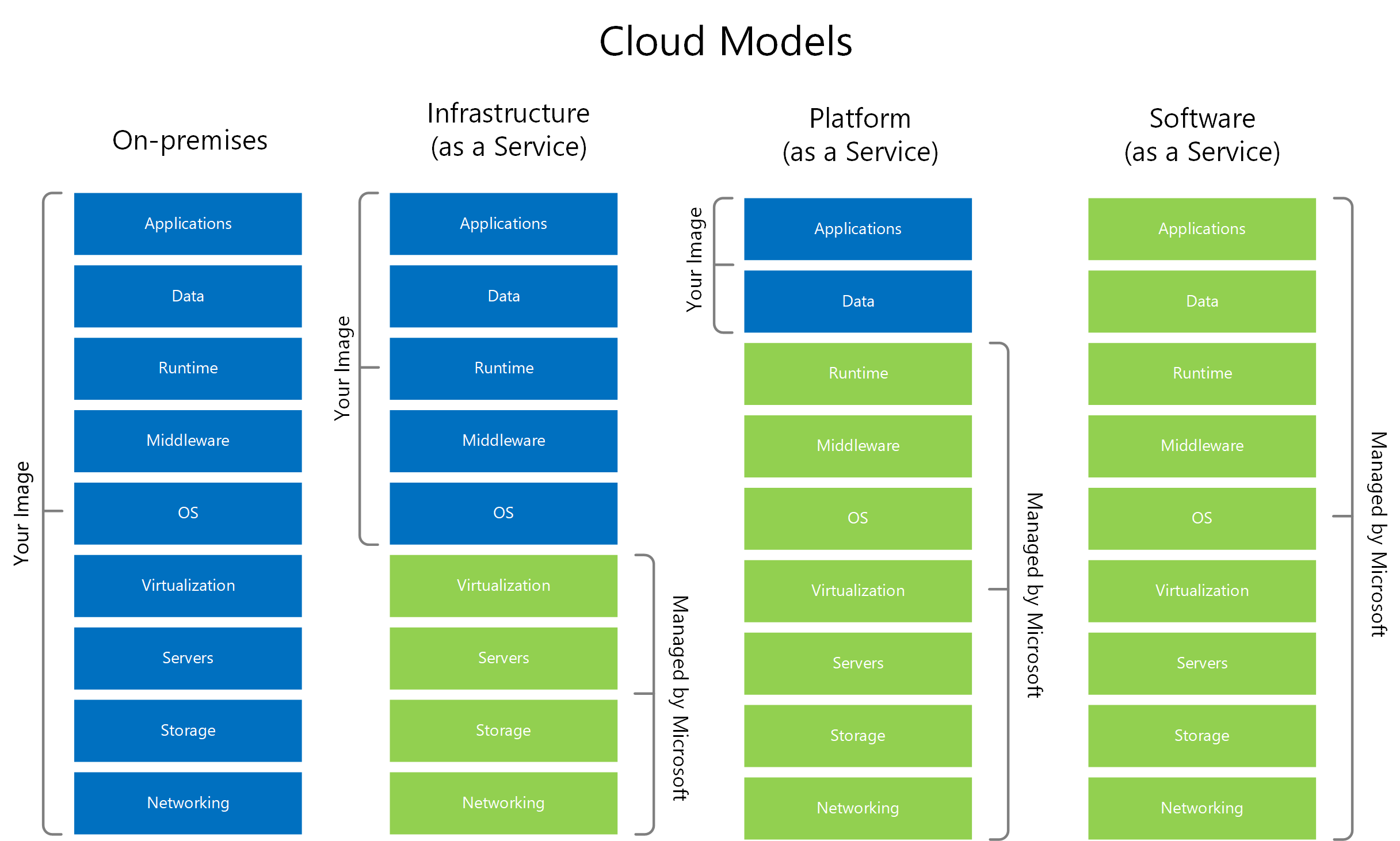
This ease of operation comes at a cost of reduced flexibility, and sometimes performance.
Test
Let’s do a semi-scientific test and move some data from Azure Data Lake Storage (ADLS) Gen2 to Azure SQL Managed Instance (SQLMI) using Azure Data Factory (ADF) with both private managed endpoints using the Managed Virtual Network Integration Runtime, and the Self-Hosted Integration Runtime in a VM that we provision and control.
I am using the UK Land Registry Price Paid full dataset for this test which is a decent size, but not too big. ~5 GB of data in ~30 million rows.
Code provided
Code for this test and demo has been provided including the entire infrastructure here so you can follow along and perform your own tests with your own data if desired.
Sketch

A bit messy but I talk through this in the video below
Managed Virtual Network (PaaS)
This allows you to provision a connection to your private endpoints from ADF without going over the public internet and without having to provision and manage a VM in your Vnet.
Azure provisions a VM for you but you don’t have to manage or patch it, you then create private connections to the resources you want and approve the connections from ADF in those resources.
When developing in ADF using the Managed Virtual Network, interactive authoring must be switched on, and you will have to wait a few minutes for the provisioning of the VM. Once this is done, you will be able to connect to your private resources but you will be charged by the minute for the time this is running (similar to a standard VM).
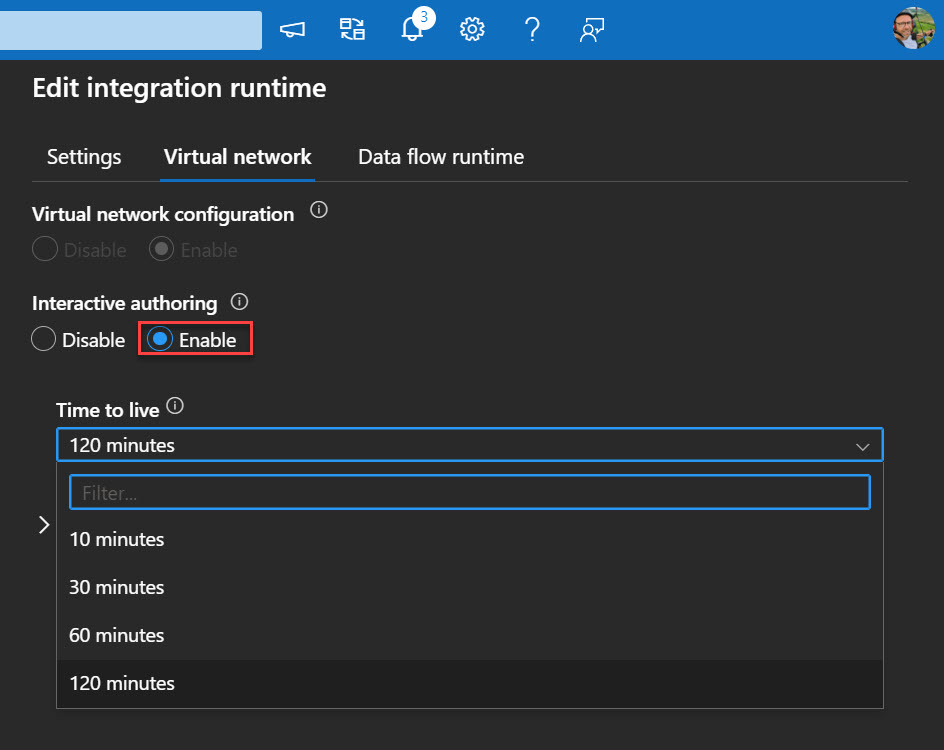
For each resource that ADF accesses, we need to approve the private IP address it is connecting from in the Managed Virtual Network:
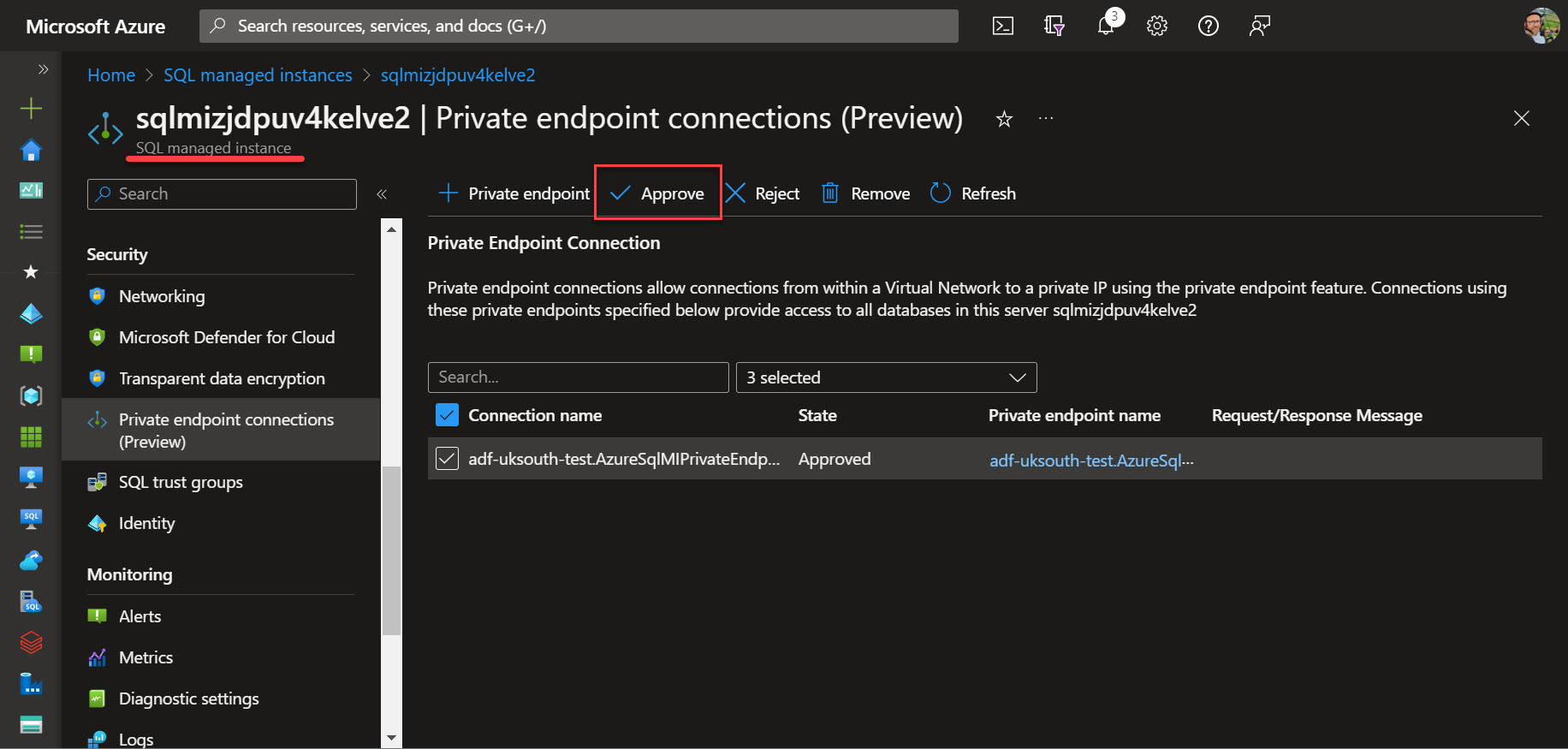
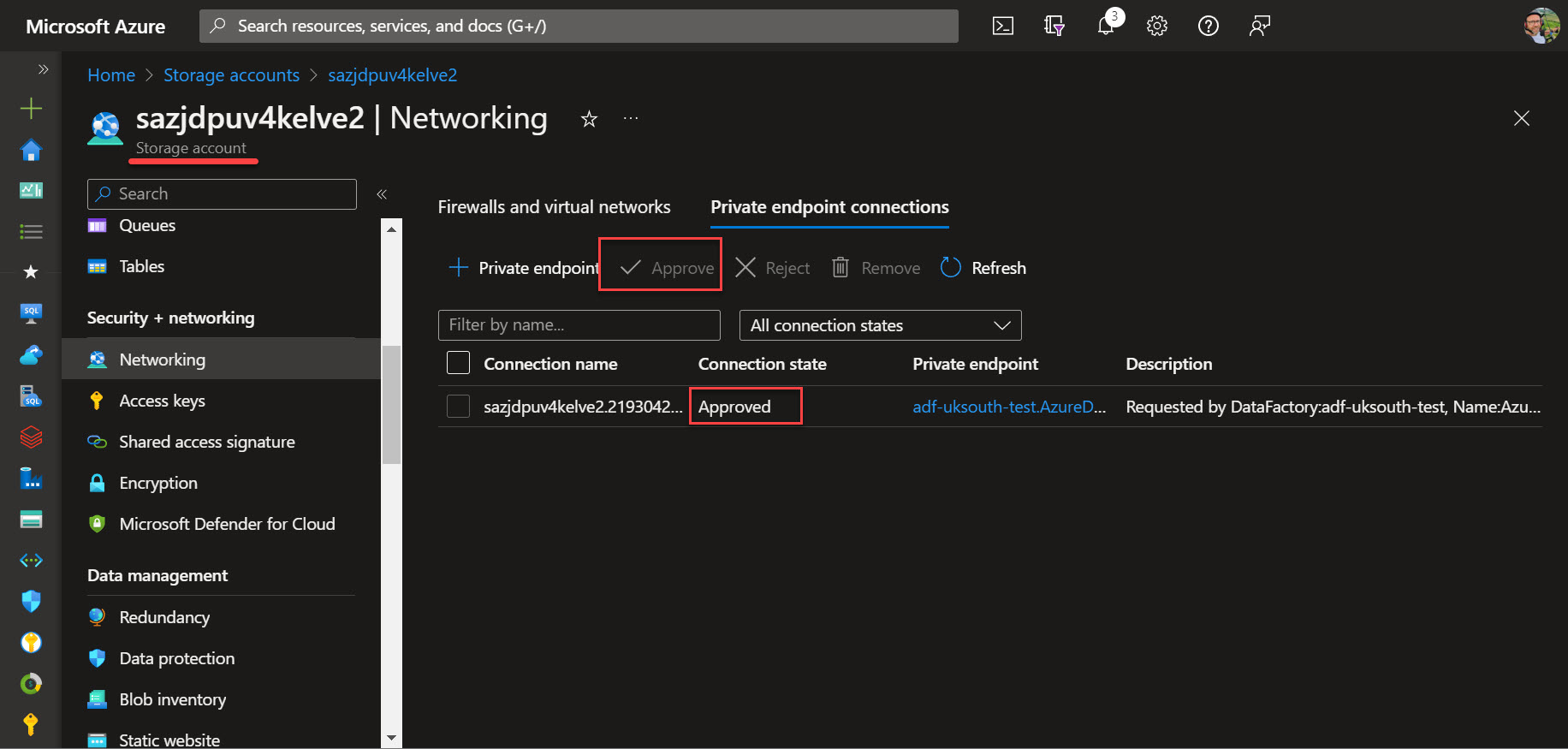
Once the approvals are done and the Integration Runtime has warmed up you should be able to connect to your sources and sinks in ADF securely over private links and develop your pipeline!

Self-hosted Integration Runtime (IaaS)
After provisioning a VM, you will need to download and install the integration runtime inside the VM and connect it to your Azure Data Factory. Once this is done, the Integration Runtime will show as Running when your VM is started. I won’t go through all that here as the Microsoft documentation is very good.
To save costs, the VM could be scheduled to start with an Azure Function, and scheduled to stop with the Microsoft.DevTestLab resource as shown in the supporting code bicep template.
Performance
I tested three loads using each Integration Runtime and I tested with three different VM Sizes for the Self-Hosted runtime to try and find a sweet spot.
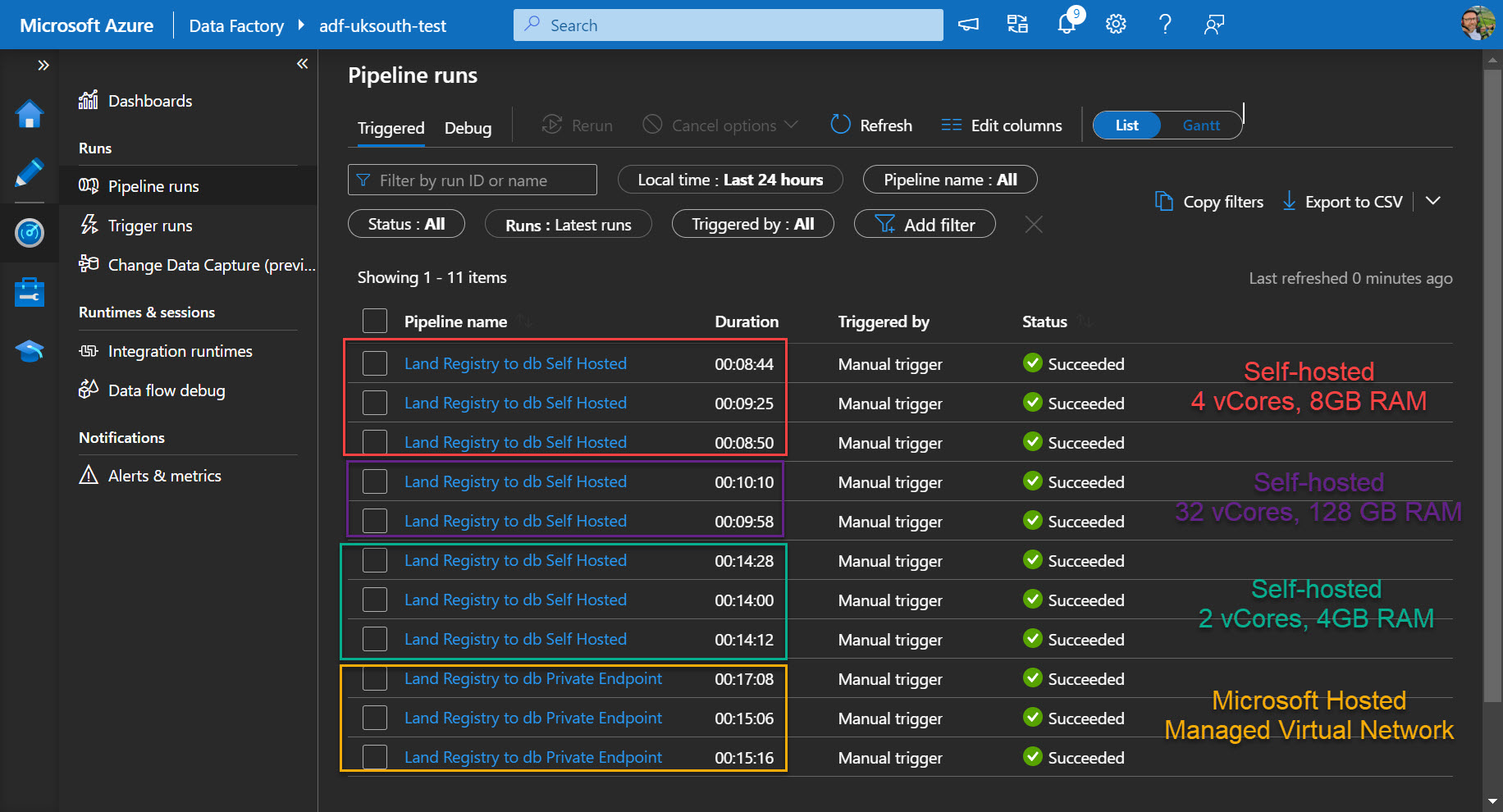
Microsoft: The recommended configuration for the Integration Runtime (Self-hosted) machine is 2 GHz, 4 Core CPU, 8 GB Memory and 80 GB disk. e.g. D4lds_v5
It seems that the recommended configuration performs well enough with small gains using a large VM to host the Integration Runtime.
Conclusion
Managed Virtual Network
Pros:
- Don’t have to manage and provision your own VM, therefore cheaper to operate
- Cheaper to run
Cons:
- Need to wait for it to warm up when authoring or running pipelines
- Lower performance, but should be adequate for most
- Private Endpoints a bit fiddly to set up, but that’s a one time process
Self-Hosted
Pros:
- More control over performance
- Always on when your VM is running
- Simpler configuration - private endpoints in a Managed Virtual Network not required
Cons:
- More expensive to run
- More expensive to operate - staff need to patch and troubleshoot any issues with the VM
Recommendation
Connectivity using the Managed Virtual Network is in Preview at the time of writing for Azure SQL Managed Instance. When this is Generally Available, I recommend the Managed Virtual Network as the most cost-effective and easier solution.